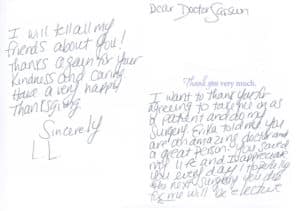Scar Revision in Nassau County & Long Island, NY
Improving your appearance with scar revision surgery
Scars are visible signs that remain after a wound has healed. They are unavoidable results of injury or surgery, and their development can be unpredictable. Poor healing may contribute to scars that are obvious, unsightly or disfiguring. Even a wound that heals well can result in a scar that affects your appearance. Scars may be raised or recessed, different in color or texture from surrounding healthy tissue or particularly noticeable due to their size, shape or location.
Discoloration, surface irregularities and other more subtle scars can be cosmetically improved by surgery or other treatments recommended by Dr. Sasson. These types of scars do not impair function or cause physical discomfort and include acne scars as well as scars resulting from minor injury and prior surgical incisions.
Keloids are larger than hypertrophic scars. They can be painful or itchy, and may also pucker. They extend beyond the edges of an original wound or incision. Keloids can occur anywhere on your body, but they develop more commonly where there is little underlying fatty tissue, such as on the face, neck, ears, chest or shoulders.
Contractures are scars that restrict movement due to skin and underlying tissue that pull together during healing. They can occur when there is a large amount of tissue loss, such as after a burn. Contractures also can form where a wound crosses a joint, restricting movement of the fingers, elbows, knees or neck.
Hypertrophic scars are thick clusters of scar tissue that develop directly at a wound site. They are often raised, red and/or uncomfortable, and they may become wider over time. They can be hyperpigmented (darker in color) or hypopigmented (lighter in color).
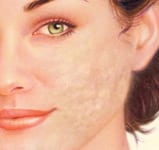
Discoloration, surface irregularities and other more subtle scars can be cosmetically improved by surgery or other treatments recommended by your plastic surgeon. These types of scars do not impair function or cause physical discomfort and include acne scars as well as scars resulting from minor injury and prior surgical incisions.
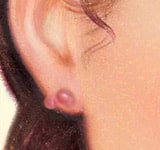
Keloids are larger than hypertrophic scars. They can be painful or itchy, and may also pucker. They extend beyond the edges of an original wound or incision. Keloids can occur anywhere on your body, but they develop more commonly where there is little underlying fatty tissue, such as on the face, neck, ears, chest or shoulders.
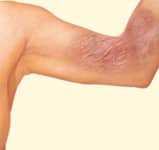
Contractures are scars that restrict movement due to skin and underlying tissue that pull together during healing. They can occur when there is a large amount of tissue loss, such as after a burn. Contractures also can form where a wound crosses a joint, restricting movement of the fingers, elbows, knees or neck.
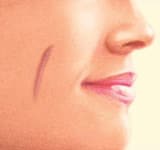
Hypertrophic scars are thick clusters of scar tissue that develop directly at a wound site. They are often raised, red and/or uncomfortable, and they may become wider over time. They can be hyperpigmented (darker in color) or hypopigmented (lighter in color).
Scar revision surgery is meant to minimize the scar so that it is more consistent with your surrounding skin tone and texture. Although scar revision can provide a more pleasing cosmetic result or improve a scar that has healed poorly, a scar cannot be completely erased.
Scar revision is a highly individualized procedure and you should do it for yourself, not to fulfill someone else’s desires or to try to fit any sort of ideal image. The type of scar you have will determine the appropriate techniques Dr. Sasson will use to improve your scar.
The success and safety of your scar revision procedure depends very much on your complete candidness during your consultation. You’ll be asked a number of questions about your health, desires and lifestyle.
The degree of improvement that can be achieved with scar revision will depend on the severity of your scarring, and the type, size and location of the scar. In some cases, a single technique may provide significant improvement. However, Dr. Sasson may recommend a combination of scar revision techniques to achieve the best results.
Topical treatments, such as gels, tapes or external compression, can help in wound closure and healing, or to reduce the ability of skin to produce irregular pigment. These products may be used to treat existing surface scars and discoloration, and to aid in healing of scar revision procedures. Our aesthetician Laura can help you out with those products.
Injectable treatments are often used to fill depressed or concave scars. Depending on the injectable substance used and your particular scar conditions, results may last from three months to several years. Therapy must be repeated to maintain results. One form of injection therapy uses steroidal-based compounds to reduce collagen formation and can alter the appearance, size and texture of raised scar tissue.
Surface treatments are most often used for cosmetic improvement of scars. These methods can soften surface irregularities and reduce uneven pigmentation. Surface treatments are a controlled means of either mechanically removing the top layers of skin or changing the nature of tissue. These treatment options include:
- Dermabrasion is a mechanical polishing of the skin.
- Laser or light therapy causes changes to the surface of the skin that allow new, healthy skin to form at the scar site.
- Chemical peel solutions penetrate the skin’s surface to soften irregularities in texture and color.
- Skin bleaching agents are medications applied topically to lighten the skin.
Sometimes for deeper scars an incision is needed to surgically remove the old scar.
Closing the incisions
Some scars require layered closure. Layered closure is often used where excision extends to tissue below the skin surface or in areas with a high degree of movement. The first step, or layer, requires sub-dermal closure (below the skin surface) with absorbable or non-removable sutures. Layers of closure continue to build, concluding with closure of the remaining surface wound.
Advanced techniques in scar revision include complex flap closure to reposition a scar so that it is less conspicuous, or improve flexibility where contracture has restricted mobility.
Progress and healing
The initial healing phase of a surgical scar revision may include localized swelling, discoloration or discomfort and may take 1 to 2 weeks. Healing will continue for several weeks and as the new scar heals it will slowly refine and fade. With dermabrasion, chemical peel or laser resurfacing, you will experience similar conditions at the treated area, in addition to overall sensitivity.
The results will be long-lasting
The final results of your scar revision surgery will be long-lasting, however it may take several months for your final results to become apparent and in some cases it may take a year for the new scar to fully heal and fade.
The practice of medicine and surgery is not an exact science. Although good results are expected, there is no guarantee, in some situations, it may not be possible to achieve optimal results with a single surgical procedure and another surgery may be necessary.
Schedule Your Scar Revision Consult With Dr. Sasson!
To learn more about the various Scar Revision services offered at Sasson Plastic Surgery, or to determine whether you are a candidate for the procedure, please be sure to book a personalized consult with Dr. Homayoun Sasson today. Call 516-487-5017 or click here to send our team an email contact form. Our practice looks forward to serving you!




